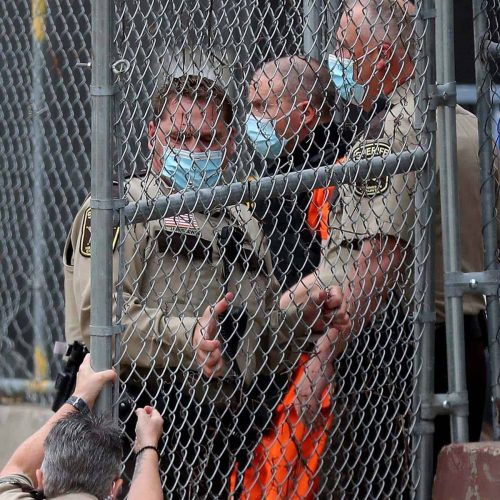Introduction
Because of fears for his safety, Derek Chauvin has been held in solitary confinement at Minnesota’s only maximum-security prison since he was convicted of George Floyd’s murder last month.
The former Minneapolis police officer, who killed Floyd by kneeling on his neck in May 2020, is expected to remain isolated at least until his June 25 sentencing hearing. Convicted of two counts of murder and one count of manslaughter, he could face a longer prison sentence than the 15-year state guideline because of “aggravating factors.”
Once sentenced, though, Chauvin could serve his time outside Minnesota’s prison system under a little-known, opaque arrangement that allows prisoners like him to be transferred out of state.
As of May 10, Minnesota had 64 prisoners held in other states under the “interstate corrections compact,” which allows inmate exchanges with 39 other jurisdictions — 37 states, the District of Columbia and the federal prison system.
A similar, regional corrections compact also exists, but its signatories are 11 western states, not including Minnesota.
Five years ago, when I was a reporter in Hawaii, I looked into both corrections compacts as part of a John Jay College of Criminal Justice reporting fellowship project. What I learned then — and what’s still true today — was how secretive everything was; few people outside of prison officials overseeing inmate exchanges knew anything about them.
In fact, I found out that there was virtually no formal research on the subject other than a brief 2006 study sponsored by the National Institute of Corrections, an agency under the U.S. Department of Justice.
The study found that, under the corrections compacts, the transfers were fairly common: Nationwide, more than 2,300 prisoners were being held either out of state or in federal facilities at the time.
The most common reason for transfers, the study found, was “facility overcrowding,” followed by “special custody inmates” — prisoners needing protection or posing a danger to others. “Special program needs” and “post-incident cool down” were other commonly cited reasons.
In some states, prisoners can request their own transfer for “compassionate reasons,” allowing them to be near their families or to avoid “undue hardship on visitors.”
But none of the states would disclose to me the details on individual transfers, such as the identity of the prisoner involved, specific reason for the transfer or location of where the prisoner is held.
Security reasons might explain the secrecy behind some transfers, but prison reform advocates told me they were troubled by the blanket denial of information. They worried that the lack of transparency could open doors for abusive transfers — in retaliation for complaining about prison conditions, for instance.
A case in point: I wrote about a transfer of a Hawaii prisoner, convicted of a grisly murder on Big Island, to the Southern New Mexico Correctional Facility. He was transferred from another prison shortly after an official there allegedly threatened to send him to a place where he “won’t get out alive.” Eventually, as he was walking laps around the recreation yard one day, he was bludgeoned to death by another prisoner.
We don’t know what exactly happened in New Mexico. Hawaii prison officials refused to disclose any details on the prisoner’s death or whether any investigation had been conducted into circumstances surrounding his transfer.
In Minnesota, meanwhile, all out-of-state transfers are currently suspended due to the pandemic, ruling out any immediate relocation for Chauvin.
Still, on paper, at least, Chauvin appears to be a prime candidate for a transfer once COVID-19 restrictions are lifted. But finding a secure enough facility for him, in Minnesota or elsewhere, may prove a challenge, given his far-reaching notoriety.
To Amy Fettig, executive director of The Sentencing Project, a Washington, D.C.-based prison reform advocacy group, the dilemma underscores the need for a fundamental rethinking of the prison system.
“All of this raises questions about how we’re spending billions and billions of dollars running these institutions and not being able to keep individuals safe,” Fettig said. “We have to ask what has gone so terribly wrong and why we aren’t fixing that, instead of putting a Band-Aid on a problem by shipping people around.”
Rui Kaneya is a senior reporter at the Center for Public Integrity. He can be reached at rkaneya@publicintegrity.org. Follow him on Twitter at @ruikaneya.
Read more in Inside Public Integrity
Watchdog newsletter
‘The time is right’: Educator advocates for path to citizenship
A Q&A with an undocumented school administrator who says her work is important because it shines a light on the specific needs of Black immigrants.
Watchdog newsletter
A century after the Tulsa Race Massacre, Oklahoma is locked in a battle over how to talk about it
A new Oklahoma law will shape how educators can teach one of America’s deadliest incidents of racial terror.




Join the conversation
Show Comments